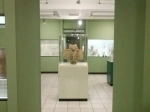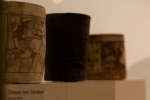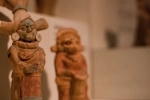Museo Popol Vuh. Guatemala city - Guatemala
The Popol Vuh Museum was founded in 1977 by Jorge and Ella Castillo, with its private collection of archaeological objects, now has one of the largest collections of the Mayan civilization ..
Since the sixties, the Castillo collection was considered one of the best in Guatemala, and several of its objects had participated in international exhibitions on Guatemalan pre-Hispanic art. In 1978, Mr. Castillo donated his collection to the Francisco Marroquín University, with the purpose of formally establishing the museum, which was installed on Reforma Avenue and 16 street, zone 10, Guatemala City.
The current facilities opened their doors in 1997, within the cultural complex of the Francisco Marroquín University, which includes the Ixchel Museum of Indigenous Costumes and the Juan Bautista Gutiérrez Auditorium. At the same time, the museum has developed a program of teaching activities aimed at schoolchildren of all levels, which seeks to stimulate the interest of youth towards the pre-Hispanic and colonial past of Guatemala. This program has become one of the main extra-classroom activities in Guatemalas social studies and history programs.
In recent years, the Popol Vuh Museum has participated in the most important pre-Hispanic and colonial art exhibitions in Guatemala. On a permanent basis, it maintains programs of conservation and restoration of the objects of its collection, and it is projected to the public through lectures and free courses. The permanent exhibition is one of the best of its kind in Guatemala. Special exhibitions are held periodically, backed by solid research on specific aspects of the collection. The visit to the Popol Vuh Museum is indispensable for all those interested in Mayan archeology and the pre-Hispanic and colonial art of Guatemala.





